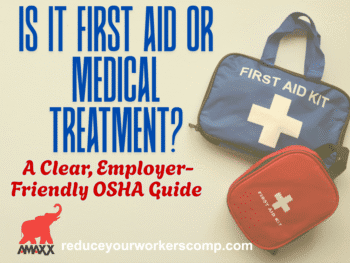
Click Link to Access Free PDF Download
“The 6-Step Process To Determine Workers’ Comp Injury Causation”
When is Vocational Rehabilitation Appropriate?
Vocational rehabilitation services are provided to employees who are qualified under a workers’ compensation law. This is a benefit that did not come into acceptance in most jurisdictions until the 1970s. It is generally not available to an employee unless they have been off work for an extended period of time.
In order to qualify, a consultation is usually performed by a Qualified Rehabilitation Consultant (QRC), and a recommendation is made regarding the employee’s status. Factors generally considered include:
- Whether the employee is permanently precluded or is likely to be permanently precluded from engaging in their usual and customary occupation or from engaging in their pre-injury job;
- Whether the employee is reasonably expected to return to suitable gainful employment with the date of injury employer; and
- Whether the employee can reasonably be expected to return to suitable gainful employment through vocational rehabilitation services by taking into consideration the treating physician’s opinion regarding the employee’s ability to work.
Vocational Rehabilitation is Being Provided – Now What?
During vocational rehabilitation, the QRC will issue regular progress reports. It is essential that the claim handler monitors vocational rehabilitation once it has been approved. These reports outline the services being provided and the progress the employee is making in recovering from the work injury. Important issues to consider when reviewing periodic reports are as follows:
- New or continuing physical limitation that significantly interferes with the completion of the rehabilitation plan;
- Whether the employee is participating fully with the plan; and
- Whether the goals of the plan should change, or be modified.
Steps should be taken to terminate vocational rehabilitation services if it appears the employee will not benefit from ongoing assistance from the QRC.
Do Not Pass Go: Shutting Down Vocational Rehabilitation Services
Each jurisdiction has the prescribed method one must follow in order to terminate the rehabilitation plan, and discontinue ongoing services from the QRC. While the process may differ, there are general requirements that are considered when putting an end to vocational rehabilitation serves.
- A new or ongoing physical disability that significantly interferes with the completion of the rehabilitation plan. This is sometimes the case when the employee has a significant setback in their medical care or new injury or disability that is not related to their work injury;
- The employee is not cooperating with the vocational rehabilitation being provided by the employee. Common examples include missing medical and physical therapy appointments, or failing to keep in contact with the employer and/or QRC; and
- The employee is not participating effectively in the implementation of the rehabilitation plan.
The focus of the arguments made to terminate ongoing vocational rehabilitation services is whether the employee would benefit from additional vocational rehabilitation assistance. The party seeking to cease these services has the ultimate burden of proof. Grounds for stopping these services that are absolute usually include:
- An employee who has returned to work with a negligible wage loss, or without a wage loss. Expectations of near-term future earnings can also be taken into consideration;
- Settlement of a workers’ compensation case, which closes out future vocational rehabilitation services;
- The employee is no longer making themselves available for services;
- Death of the employee.
The closure of a rehabilitation plan generally requires a form to be filed with the industrial commission.
Conclusions
Members of the claim management team must closely monitor every workers’ compensation benefit being received by an employee. This includes keeping abreast of the employee’s status and cooperation with vocational rehabilitation benefits. While this is a useful benefit, steps should be taken to terminate it if evidence supports the conclusion the employee would not likely benefits from ongoing vocational rehabilitation services.

Author Michael Stack, CEO Amaxx LLC. He is an expert in workers’ compensation cost containment systems and helps employers reduce their workers’ comp costs by 20% to 50%. He works as a consultant to large and mid-market clients, is a co-author of Your Ultimate Guide To Mastering Workers Comp Costs, a comprehensive step-by-step manual of cost containment strategies based on hands-on field experience, and is founder & lead trainer of Amaxx Workers’ Comp Training Center .
Contact: mstack@reduceyourworkerscomp.com.
Workers’ Comp Roundup Blog: https://blog.reduceyourworkerscomp.com/
©2019 Amaxx LLC. All rights reserved under International Copyright Law.
Do not use this information without independent verification. All state laws vary. You should consult with your insurance broker, attorney, or qualified professional.












